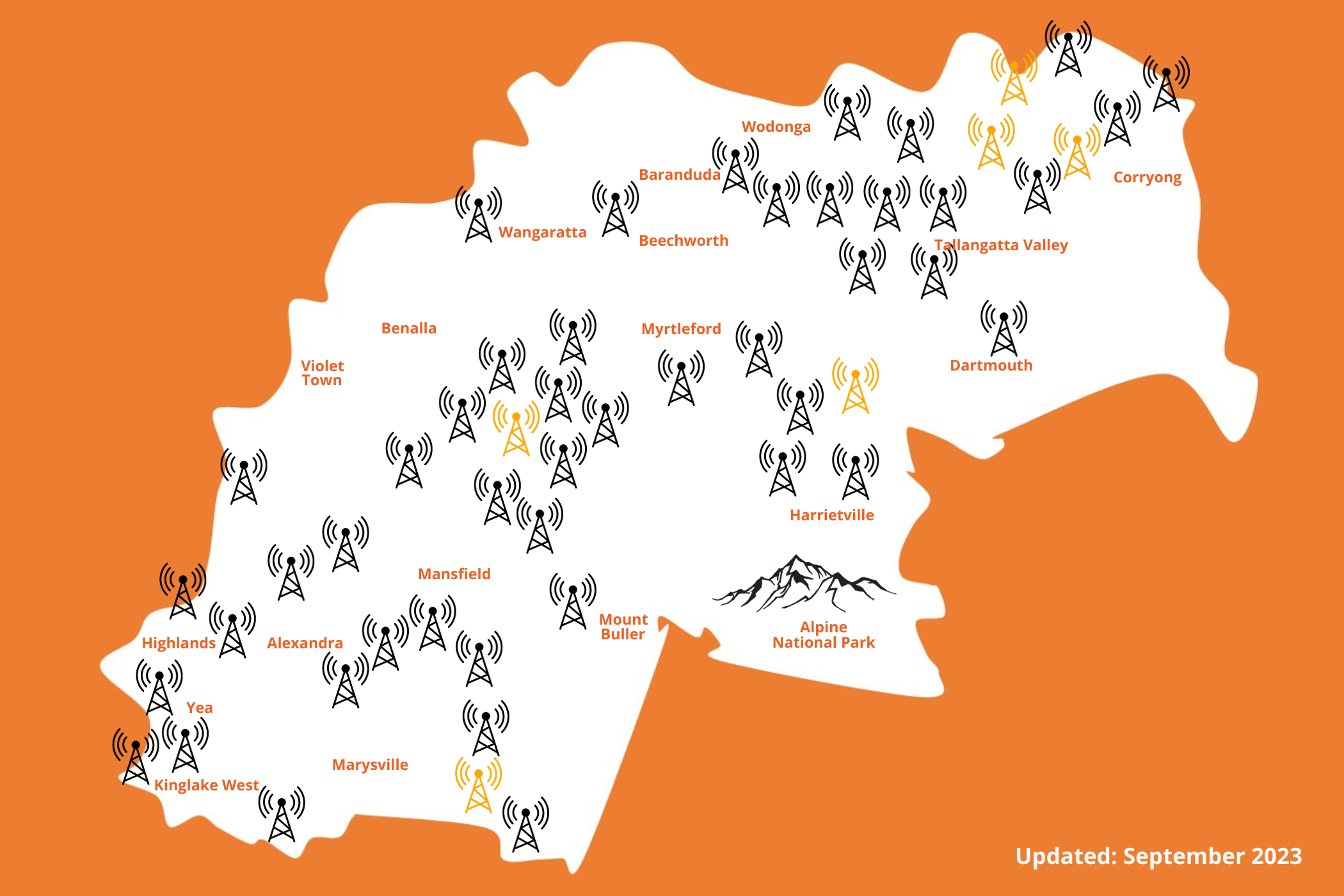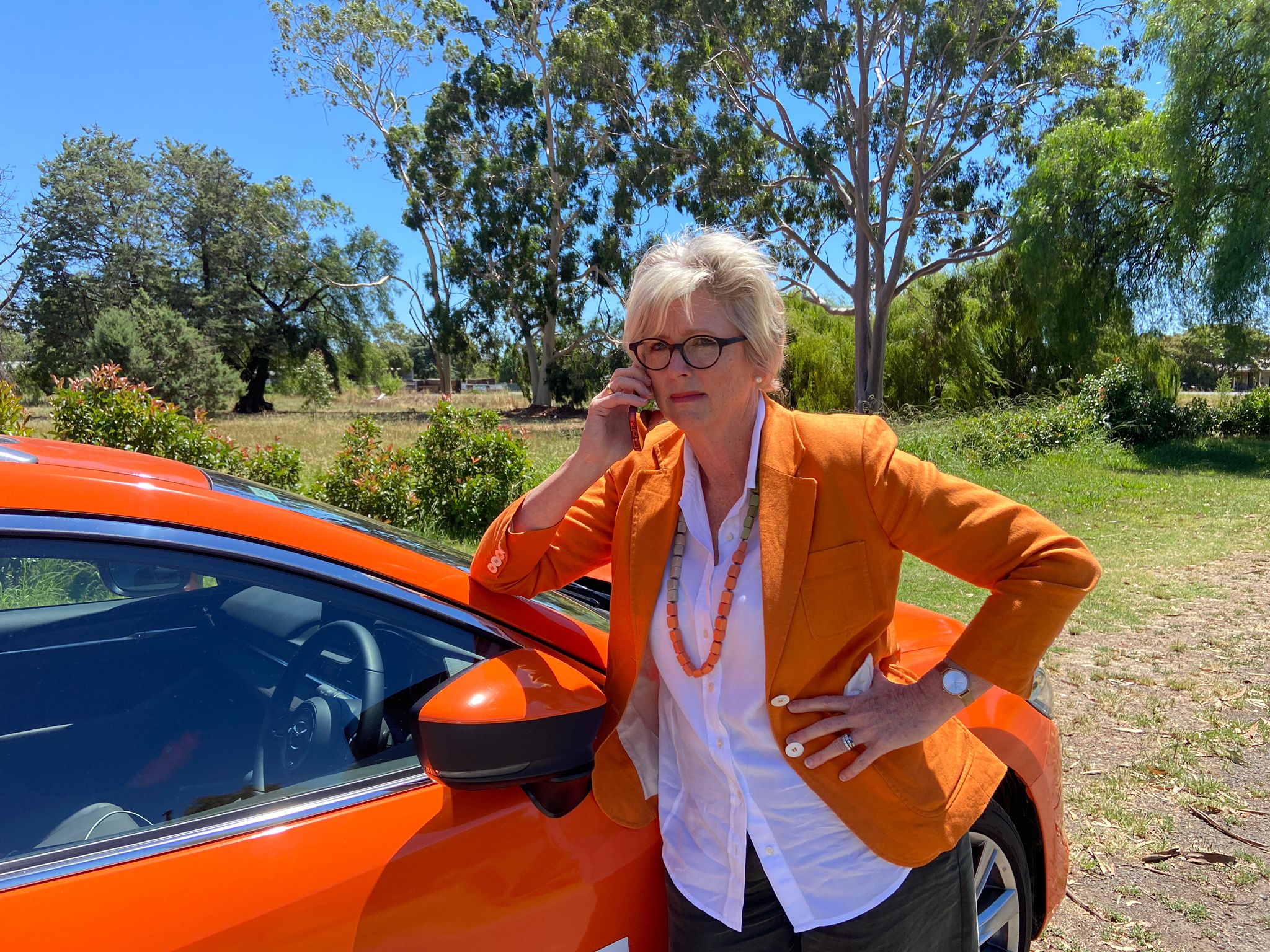Staying connected should be easy
Improving phone and internet coverage is vital for business, for study, for healthcare and for emergencies. I’m committed to making sure Indi is connected.
I am proud that under independent representation, Indi has seen significant advances in telecommunication connectivity.
There are fewer black spots and more homes than ever connected to the NBN in Indi.
Under independent leadership, Indi has:
- More than 50 new mobile towers, delivering reception to thousands of people
- Become the most successful electorate in Victoria to secure funding under the $380m Commonwealth Mobile Black Spot Program
- Secured $2.6 million to rebuild the 42-kilometre fibre optic cable through the Upper Ovens to bring high speed internet.
While I am proud of our achievements thus far, I know there are people in Indi who still don’t have adequate access to the internet and there remain mobile blackspots which are yet to be fixed.
The job is not finished, and I’m committed to continuing this work.

IMAGE: Celebrating the new mobile tower in Koetong with the local community in September 2024.
Eliminating mobile black spots
Since I was elected in 2019, I have worked with local communities and councils through the Indi Telecommunications Advisory Group (ITAG) to reduce the number of mobile black spots in Indi. Collective voice of community to lobby for funding and infrastructure
I have helped secure funding for nine new towers across Indi, including at Harrietville, Taggerty, Creighton’s Creek, Cudgewa, Mt Bruno, Burrowye, Koetong, Frenchman’s Gap, Tawonga.
Tarrawingee, Boho South, Goorambat and Kennedys Point also have new towers committed under the Regional Connectivity Program.
Since 2019, Indi has been the most successful electorate in Victoria in receiving funding under the Federal Government’s Mobile Black Spot Program.

IMAGE: The new mobile towers delivered to Indi under the Mobile Blackspot Program since 2015. Towers in black are already completed, those in orange are in progress.
That’s an incredible achievement. That’s how independents deliver.
I acknowledge there are still critical black spots that need funding on major tourist and commuting thoroughfares and in bushfire areas where we simply cannot afford to have outages. There are still capacity issues across some of our townships too, like Mansfield, Beechworth, Benalla and Bright.
You can see more on Telstra’s rollout and current coverage here.
I am also working to increase the amount of funding available for new mobile towers from $500,000 to $1 million so we can secure proper infrastructure for our communities.
My office is working closely with the government and telecommunication providers to ensure the elimination of blackspots in Indi. I’m excited that four more mobile towers are in planning and will be in operation from mid-2024.
I know mobile black spots still exist. If you have a black spot that affects you, please contact the ITAG representative at your local council or register it directly with Telstra, and my office and let me know, and I will ensure it’s added to our list. By working together, we get results.
Connecting Indi to the NBN
More homes than ever are now connected to the internet.
Indi now has:
- 59 fixed wireless towers providing coverage
- 85,851 premises with access to the NBN and;
- 52,997 homes are connected to the NBN
- Benalla, Wangaratta and Wodonga have access to Business Fibre Zones
This is good news for Indi households.
Despite the expansion of the NBN I know there is still more work to do.
Strong internet infrastructure is crucial to our prosperity and development here in the regions.
Since being elected, I have taken the concerns of Indi residents directly to the Communications Minister and introduced legislation to improve internet speed and reliability in regional Australia.
I am working to ensure the Federal Government funds the entire $300 million needed to finish the NBN build in regional Australia including Indi.
For more information on the roll-out of the NBN please visit this website.
Faster internet for regional Australia
Access to fast, high-quality, and reliable internet should be the same throughout rural and regional Australia as it is in the big cities.
In Indi, fast internet access is important to everyone and vital to run our small businesses and farms, participate in remote learning, telehealth and connect with emergency services during natural disasters.
I was pleased to introduce the Faster Internet for Regional Australia Bill 2022 which would force NBN to provide high-quality internet in Indi, or face serious financial penalties. This Bill would make mandatory average speeds of 25 megabits per second all day, every day, not just once per day as the government currently proposes.
Connecting businesses to cheaper internet
Indi has seen significant advances in connectivity for businesses too.
Since 2021, Business Fibre Zones have been rolled out across Indi providing faster internet connection at prices equivalent to those available in major cities.
Without this initiative, if a business wants a fibre connection they need to pay for installation of the fibre as well as a contract. Now businesses within the zone footprint will be able to access NBN Enterprise Ethernet services with a $0 fibre installation cost and receive fast speeds at CBD equivalent pricing.
Wangaratta, Benalla, Wodonga now have access the Business Fibre Zones and I encourage local businesses to connect.
Transitioning away from 3G
As 3G networks begin to be turned off and telecommunication companies move away from 3G, keeping regional Australians informed about what this means for us is important.
4G and 5G networks will provide rural and regional Australia with faster internet and more reliable coverage.
The 3G network should begin to be switched off from December 2023 and complete by October 28th 2024.
Many people contact my office with questions about what this transition means for them. Here are some responses to frequently asked questions:
What does closure of the 3G network mean for me?
- If you have a device that is only able to connect to 3G, that device will no longer be able to connect after the closure date. You will need to upgrade your device before your provider ceases 3G operations. This includes people using 3G mobile and network extension devices, some EFTPOS machines and antennas that operate on the 3G network only.
Will I be able to make emergency 000 calls after 30th June 2024?
- Unlikely. If your device isn’t compatible with the 4G network (including VoLTE emergency calling), you won’t be able to make an emergency call to 000 on the mobile network.
Will my medical alarms and life critical services still work after the closure of 3G?
- If you’re using a device to monitor health such as medical alarms, security or other remote safety situations, and they’re currently using the 3G 2100 MHz layer, they’ll stop working when 3G coverage ends.
- It is recommended you check for compatibility on accompanying paperwork from the manufacturer, and/or contact the provider of these devices to upgrade now.
What will happen if my device is affected, and I don’t take any action?
- Your current device will continue to operate until the telecommunication companies disconnect 3G. If you don’t upgrade your device or change the network settings (if applicable) before this disconnection, then you’ll no longer be able to use your service from this device.
For more information on your provider’s 3G closure, please visit their relevant page:
Regional Tech Hubs provide free and independent connectivity advice for people living and working in regional Australia. Visit their website to access their services, or call on 1300 081 029.

